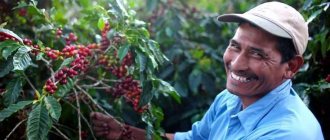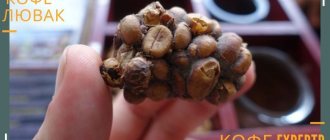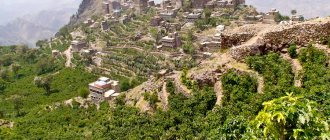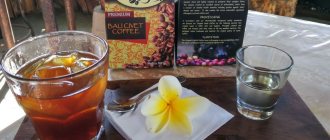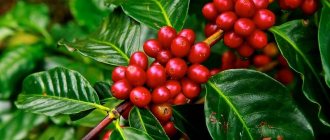Honduras neighbors countries such as Nicaragua, El Salvador and Guatemala. Local coffee is full-bodied, sweet and soft in profile. Previously, Honduran coffee was considered a second-class product and was used mainly to create blends, but recently the situation has changed for the better. If a few years ago local products were suitable mainly for home consumption and supplies to neighboring Guatemala, now the country’s government is investing in education and technology, developing infrastructure, and building roads. As a result, Honduran coffee has gained recognition in the world market.
Interesting Facts
The altitude at which the plantations are located: 1100–1650 meters above sea level.
Honduran coffee varieties: Arabica (Bourbon, Caturra, Typica, Catuai, Pacas).
Harvest: November to April. Only red, ripe fruits that have reached maximum taste and aroma are harvested.
Processing of grains: wet, dry.
Aroma: vanilla, hazelnut.
Nuances: chocolate, nuts, apricot, tropical fruits.
Body: round, medium.
Acidity: soft, balanced.
Production: Nearly 6 million 60-kilogram bags of Honduran coffee were produced in 2020, 89% of which were exported.
Honduras is the largest producer of coffee beans in Central America, the 3rd producer in Latin America (after Brazil and Colombia), and the 6th producer in the world.
How coffee is grown
Growing coffee is a huge task that involves hundreds of thousands of people; below we briefly described the process - how to grow a coffee tree and get a harvest from it:
- The first step is to get a seedling from a coffee bean. To do this, you need to place the treated grain under a small layer of soil and within a month a stem will sprout from the grain. This whole structure looks like a soldier in a helmet, in fact, that’s what they call it – the “coffee soldier.”
- Then this “soldier” is moved to a “coffee nursery”, these are some kind of greenhouses, in which the seedling, after 8-10 months, grows into a small tree, 40-60 cm high.
- Afterwards, the tree and its roots are transplanted to the main plantation site, where it will remain as long as it produces a harvest. The life cycle of a coffee tree usually does not exceed 40-50 years.
- The tree continues to grow and its height can reach up to 15 meters, but for ease of harvesting it is regularly pruned to the standard height of 3 meters.
- In the third year of life, the tree produces a small harvest for the first time. It all starts with flowering, which lasts a couple of days. During this period, pollination (fertilization) of flowers occurs, which themselves resemble jasmine and they smell the same.
- Then the petals fall off and in their place fruits, small berries are formed; in appearance they resemble cherries: they have the same color, shape and size. Fruit ripening lasts from 8 to 14 months, after which the harvest is harvested.
- Then everything repeats itself, and the coffee tree produces one harvest after another, especially for the first 15 years, then the yield drops. Moreover, the number of harvests per year depends on the place of growth. For example, in mountainous areas, where it is cooler and drier, one crop is harvested, and in humid valleys up to 4 times a year
Now you know where coffee is grown and how difficult it is, and if you are interested in continuing to develop coffee literacy, then you should read our article “Coffee Production: Harvesting, Processing and Logistics.” See you soon.
Story
It is not known exactly how coffee beans came to this country, but it is believed that the Spaniards brought them from the Caribbean islands at the beginning of the 18th century. Documentary evidence states that within a hundred years, Honduran farmers were cultivating and roasting coffee, but in modest quantities, for domestic consumption. The first officially registered coffee plantations appeared at the beginning of the 19th century; over time, coffee exports confidently took second place in the country’s economy, second only to bananas, and already in the early 2000s, the contribution of these two products to the state budget was equal.
The 1990s were a difficult time for the country's coffee industry. On the one hand, production volumes increased, on the other, in 1998, a hurricane destroyed 80% of the crop, smuggling, underground trade in coffee that sharply increased in price, and speculation flourished.
Initially, coffee in Honduras was not of high quality. Neighboring countries willingly bought it for pennies in order to dilute their shipments with cheap grains and make good money on it.
Towards the 2000s, the government introduced a new tax on coffee exports (closing shop for Guatemala and other coffee giants enriching themselves at the expense of Honduras). The money received was used to develop the industry. Farmers cultivating coffee trees, on the contrary, were provided with tax benefits - this created conditions for not only quantitative, but also qualitative growth.
Today, the aromatic beans are grown primarily on small farms, and the coffee industry creates about a million jobs (two million with seasonal workers and harvesters).
Interesting varieties
There is a lot of coffee growing in Honduras, with large plantations located in at least six regions of the country.
Most of the grown grains are used to create various mixes and blends. Arabica from this country has a rich but soft taste with chocolate and berry shades and bright acidity, the basis of which is fruity notes. On this basis you can create luxurious blends. This is what coffee from Honduras is famous for: it is used as part of espresso blends, as well as for signature blends. Roasting of beans can be different, medium and medium plus are very good, which reveals the base notes of taste and reduces sourness. Honduras has several recognized single varieties with distinct flavor characteristics. Recently, plantation varieties have become widespread. They are grown in small batches on separate farms. Interest in them has grown, they began to be purchased purposefully, so we can hope that the list of good single varieties from Honduras will continue to grow.
Plantation coffee can be brought as a souvenir from a trip to Honduras. Coffee tourism is well developed there and a trip to local plantations is an obligatory part of the tourist program.
Madeo
One of the best single varieties from Guatemala. It is soft, with an expressive aroma. The grains ripen for a long time, so they have a dense structure. Interesting with spicy and smoky notes, a chocolate aftertaste and a very light, even delicate, fruity acidity.
It is better to cook Madeo in a cezve so that it turns out really hot.
We recommend trying the recipe with peppers, whose spicy notes perfectly complement the flavor profile. For dessert we offer dark chocolate and prunes with nuts.
Honduras SHB
The variety is popular, characterized by a rich taste, piquant bitterness and well-balanced acidity. The highlight is the wine flavors. Very reminiscent of Colombian coffee.
Well suited for alternative brewing methods, for example, in pour over, as the best features of the flavor profile are revealed - the balance of all three main tastes, berry and wine accents and a long aftertaste.
Honduras SHB beans from different regions are sold under different brands, for example, EvaDia, San Marcos - these are all varieties of Honduras SHB. They differ in roasting and flavor due to different growing conditions.
Geographical and climatic conditions
Honduras borders the Caribbean Sea to the north and the Pacific Ocean to the south; the population of this Central American country is just over 9 million people. In the mountains the climate is more temperate; in the lowlands the weather tends to be tropical. The state has hills, valleys, coastlines and jungles - all of these areas can be used to grow coffee.
How does altitude affect the coffee bean?
It is easier for roasters to understand how altitude affects the coffee bean if it is grown at high altitudes or in cool climates - it has hardness or density. Those. coffee berries that develop slowly will have high density beans; and those that develop quickly will have soft or low-density grains. Unfortunately, the coffee industry does not have a unit for measuring density (some countries describe beans grown at a certain height as Hard Bean or Stictly Hard Bean, but this brings us back to the original issue that the ideal height will vary from country to country and region to region) . However, the idea of measuring density breaks the relationship between height and quality.
That's because roasters, even more than buyers, baristas and consumers, need information about bean density. You see, slower grain development not only results in a more unique and complex flavor, it also affects the physical structure of the grain.
As Zach Daggett wrote in Perfect Daily Grind in 2020, low-density green beans tend to have an open chute. For those grains that have a higher density, this longitudinal groove is closed.
But if we look inside the grain, we see even greater differences: low-density grains have more air pores. This means that heat will be transferred more slowly and unevenly during roasting. In this case, growers must use a lower temperature so as not to burn the grain.
Coffee farm in Brazil. ©Julio Guevara
Characteristics of Honduran Coffee Beans
The taste of Honduran coffee varies from mild to sharp, and is difficult to distinguish in blends. The quality directly depends on the altitude of growth - mineral notes are clearly felt in grains from the highest mountain plantations. The best varieties are grown in the shade of other trees, and different plants are mixed on the plantation, so that the coffee absorbs the aroma of tropical fruits and flowers.
The overall profile is balanced, sweetish, with hints of vanilla. However, the main characteristic feature of local products is diversity, due to a variety of climatic zones, soils, and conditions.
Taste and aroma
Robusta and Arabica have differences in taste. The first one is very bitter, almost not sour. The drink made from it is stronger and rougher than its analogue. The exception is Indian robusta, the taste of which includes nutty and chocolate notes.
Arabica gives a specific sourness. It is sour, but not bitter. Depending on the variety, location, growing conditions of trees, processing of grains, you can get a wide variety of tastes. Examples:
- Brazilian arabica has a simple taste, devoid of bright shades;
- Mysore (India) is distinguished by the presence of wine sourness, which Indian Robusta lacks;
- Yemeni reveals notes of chocolate in its taste;
- Zambian combines light bitterness, sourness, and fruity flavor;
- Guatemalan - sour variety with a berry aftertaste, notes of bergamot and lemongrass.
Due to the wide variety of tastes, it is believed that Arabica coffee tastes better.
Coffee regions of the country
The taste of the finished drink depends on the region of origin of the beans.
Copan. Balanced body, chocolate flavor, notes of citrus and caramel, creamy texture.
Opalca. Balanced body. The bouquet is dominated by fruit tones.
Montecillos. Sweet fruity aroma, distinct sourness, nuances of peach, apricot and orange. The structure is velvety, the sour profile is clearly felt.
Comayagua. The coffee is similar in characteristics to the beans from Montecillos, with the same acidity and fruity aromas. The finished drink has a velvety structure, a complex bouquet with nuances of peach, mango, jasmine, apricot, lime, honey, black currant, melon, guava, hibiscus, raspberry, white grapes, mint.
Agalta. Tropical fruits and caramel in the bouquet, sweet aftertaste, chocolate and caramel notes. Local coffee has a pronounced sourness and a sweetish finish.
El Paraiso. Balanced sweet-citrus taste and aroma, distinct sourness, soft body. The bouquet reveals tones of green apples, jasmine, peach, and white wine.
The most famous brands of coffee from Honduras
Honduras is mainly famous for growing Bourbon Arabica beans. But other varieties of coffee also grow in this country:
- Typica;
- Caturra;
- Pacas;
- Catuai.
The most famous brands of coffee in Honduras are:
- Madeo. It has a rich taste. The bitterness takes over in it, and the taste of the finished drink resembles wine. There are also chocolate and fruity notes. The bouquet reveals itself in all its diversity.
- Monosort Eva Dia - strong coffee. Strength is achieved through dark roasting of the beans. The drink is quite bitter, characterized by a taste without sourness.
- San Marcos is a coffee from Honduras that is distinguished by its balanced taste and aroma. The taste reveals fruity and tobacco notes.
Often, Honduran coffee is exported in the form of blends made from raw materials collected on different plantations. All selected varieties are labeled Strictly High Grown. To produce a blend, grains are selected that belong to the same category according to size and quality criteria.



